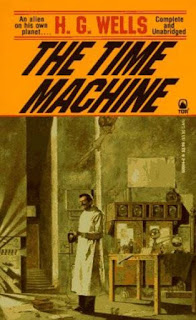“That’s Just
About Right” is a postmodern song. It was written by Jeff Black, recorded in
1995 by the country group Blackhawk, and climbed to number seven on the
American country charts. I would call the music neo-country. It does not sound
like the music of Hank Williams or even Alan Jackson. Not traditional, with a
very low “twang factor,” it could pass off as a pop song, though the mandolin
and fiddle playing give it the country flavor. It is, like many of Mr. Black’s
songs, subtle. It’s about a man who goes up in the mountains to paint “the
truth” but can’t quite nail it and is frustrated by that. Finally he abandons
the project. The song puts it this way:
My old friend, came down from the mountain
Without even looking, he
found a little truth
You can go through life
with the greatest intentions
But you do what you do
what you just got to do.
The truth the
man finds is that you cannot capture the truth, not in a painting or any other
form. You can only say, as the chorus notes, “That’s just about right.” I say it’s postmodern because postmodernism emphasizes
the relativity and the constructed nature of all systems that claim ultimate
and final truth.
And the song
inspired a story.
In the story I
wrote in response to the song, my ongoing character Sossity Chandler meets
artist Brionna Morgan at the art museum in her home city of Grand Rapids,
Michigan. Sossity, there to participate in the museum’s Sunday night concerts
series, is enthralled by one of Brionna’s paintings. The two of them fall in together,
talk about art and creativity. Sossity notices how much Brionna drinks. Before
she leaves the woman gives her an invitation to visit if she is ever in
Vermont. Sossity is informed by some of the people there that Brionna lost an
adult child and subsequently went through a divorce. Her drinking is a result
of that.
Two years later,
Sossity, who has herself gone through a painful divorce, gives a concert in
Hartford, Connecticut, remembers Brionna’s offer, calls her, and asks if the
invitation is still open. She arrives at her house. She has done some research
and found out her friend is a painter of some reputation with art in many top
museums of the world. She is also shown a portrait of her son, who had was
killed in an accident, Brionna has managed to stop drinking and put her life in
better order. She shows Sossity a vista that she (like the artist in “Just
About Right”) wants to paint but can never get exactly right.
The next few
years, their friendship deepens. Brionna design the cover for one of Sossity’s
CDs and does portraits of her and her children. Sossity buys several of her
paintings. They visit whenever Sossity is in her area of the country. During
one such visit, the two of them walk a section of Appalachian Trail. Toward the end, they come to a vista Brionna has
always loved and wanted to paint. She takes out her sketchbook and draws. They
walk on their final destination and check into a motel.
When Sossity
goes to throw something away, she finds a painting, a simple watercolor, of the
overlook lying beside the dumpster. Brionna looks through the window, notes
what has happened, comes outside, and says she had not wanted Sossity to see
the painting. It has not captured, she says, the nature of the place and is
incomplete.The
following exchange takes place:
“Why do you want to depict that?”
She did not answer but they both knew what she did not want to
say. Sossity thought of Brionna’s son, whom she had never met. His portrait had
expressed what lay beneath his physical appearance—soul, spirit, personhood.
What stood behind nature would be the answer to why he had died.
“Some things you can represent. What impressed me about the
portraits you did of my family is how you showed our personalities. People can
see our souls by looking at our faces.”
“That’s what I want to do with this landscape. I can’t capture
it.”
Sossity regarded the painting a moment. “Art is never complete,”
she said. “We just agree we’ll leave it at some point.” She ran her eyes over
the landscape. “I’d say this is just about right—as right as anyone could ever
get it.”
Sossity’s words
seem to strike home. Brionna nods and takes the painting back into their motel
room. Art can express truth—but only to a certain extent. Even the portraits
Brionna has done—those of her son and of Sossity and her children—can express
the soul only to an extent. Truth, pure truth, the truth behind things, is
eternally elusive. “Just about right” is usually the only way we can get it.
The story
appeared in Motley Press, which is no longer in print. There are some websites
with that title, but apparently none of them are the one that printed my story. This may be another story to resubmit. It seems that lots of journals close after only a short run.
For more good stories, novellas, and novellas, see my Writer's Page.
For your reading pleasure, get a copy of After Happily Ever After. What happened after Cinderella married Prince Charming? After they met Snow White, were the Seven Dwarves ever the same? In my story, see what happened after Morgianna and Ali Baba got rid of the forty thieves--everything did not go smoothly for them.
I would love to hear your comments.
Have a Happy New Year!


































